For the longest time now, routers have been helping woodworkers cut, trim and shape wood, plastic, and many other materials. Regardless of the woodworking project you want to work on, there is a good chance that you will need a router. But, with the many types of routers available in the market today, what size will you need best for your project?
Most woodworkers will start with a moderately priced 2 Horsepower handheld router. This size router will handle most jobs from small to large. Other options include smaller 1.25 HP trim routers and the larger full-sized 3 plus HP router.
The size of the woodworking router you need is dependent on the material and the task you’re undertaking. Woodworking routers are classified into three standard machine sizes, which mainly has to do with the highest horsepower their motors will generate; however, every size has comparative and practical features worth mentioning. The rest of this article will discuss other topics related to this question, including the different types and the must-have features of a good woodworking router.
Amps or Horsepower?
One thing before we start evaluating the different router offerings. Some manufactures advertise the router power in terms of Amps and some in terms of Horsepower. When comparing routers, it is good to even the playing field and convert everything into one unit.
I have always used Horsepower to evaluate any motor-driven tool in my shop. I am no electrical engineer so I cannot make the conversion in my head. Horsepower has a time component and Amps is only a measure of electrical flow so it is not possible to directly convert Amps to Horsepower.
To convert from Amp to Horsepower use the following: Amps * Volts = Watts. Then use Watts to find Horsepower by dividing by 746 (watts per horsepower) Watts / 746 = Horsepower. This number will always come out a little low vs mfg ratings due to built-in safety factors and such.
Let’s look at the Ridgid Mid-size router – Model #R22002 and the Ridgid trim router Model # R24012. The mid-size router lists both the Amps and the Horsepower: “11 Amp, 2 HP”
The trim router only lists the Amps the motor uses: “5.5 Amp”. Now I would think that because the Amp rating is 1/2 for the trim router that possibly the horsepower would also be halved also.
Start with the Mid-size router to check the math. First, convert Amps to Watts by multiplying: 11 Amp * 115 Volts = 1,265 Watts.
The next step is to use the conversion factor of 746 (watts per horsepower) and calculate the horsepower using: W / 746 = HP. In the case of the mid-size Ridgid router – 1,265 watts / 746 = 1.69. With some marketing freedom and engineering safety factors, I guess we can round that up to 2 Horsepower.
Now let’s find the HP for the Compact router. Following the same formulas, we have 5.5 Amps * 115 Volts = 632.5 Watts. Multiplied by 746 we get 0.86 HP which will probably be rounded up to 1 HP. Therefore, roughly speaking, half the amps could be estimated to be half the horsepower.
Full-Size Routers
The full-size routers are the biggest and at one time were the most dominant woodworking routers. They are usually rated at 3 HP or 3¼ HP, and are integrated with a bigger plunge or fixed base with an integrated motor. The full-size routers are designed for production use and are frequently fixed to a router table. Because of the integrated motor, these routers are not well suited for CNC Router tables The massive size of this router makes it easy to plow through a project but awkward to move around or change bits.
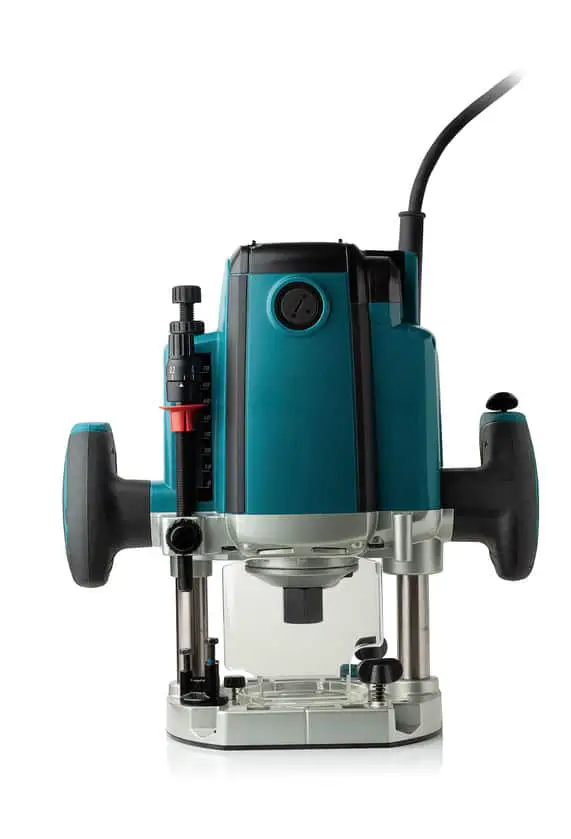
The main advantage of the full-size router is that it can accept whichever router bit diameter you have, from the ¼” shank round over router pins to the enormous ½” shank panel-raising cutter router bits. Its motor has sufficient control to drive all of them efficiently. The full-size routers can be available with lower-horsepower engines that can be good for any woodworker.
Mid-Size Routers
The mid-size routers are usually appraised at 1½ HP to 2¼ HP. They are the most common size due to their flexibility and simplicity of operation. Compared to the full-size routers, the mid-size routers have a uniformly smaller base and are significantly lighter. The router can be set with both ¼ and ½ Dia Collets; therefore, you are not restricted by the size of the router bit shanks that you can utilize.
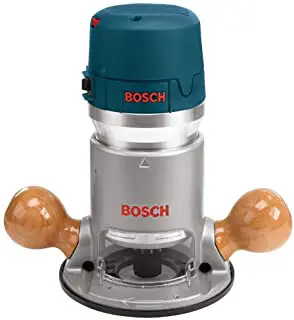
The mid-size routers are also available with multiple bases. The routers are available with a fixed –or plunge style base and can do almost every type of routing job. The flexibility of these routers makes it suitable for both professionals and hobbyists woodworkers.
Since mid-size routers most often have interchangeable bases, the motor can be removed from the base. This makes these mid-size roosters ideal for small to medium CNC router tables.
Compact Routers
The compact routers are rated at 1 HP or less and offer compact size with excellent performance. These routers are perfect for trimming, hinge mortising, slot cutting, edge forming, window cutouts, decorative inlays, scale merging, and everyday template tasks.
The compact routers are not suitable for large scale routing operations due to their limitation of horsepower and the ¼ shank router bits. This router can be different from a mid-size router by all means, but it is really convenient to have as an option.
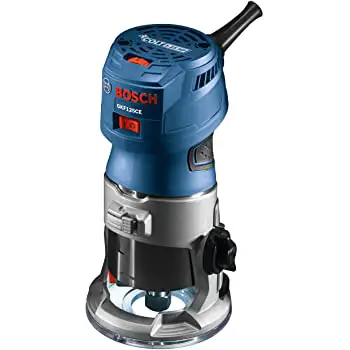
Their lightweight and relatively inexpensive cost make them ideal as a go-to router in the shop. Often woodworkers will have several compact routers in the shop each with a dedicated bit and task to do.
Compact router motors also can be removed from their base and used in a CNC router table. The smaller shank diameter and low horsepower limit the scope in which the compact router can be useful but CNC router tables are still an option for the compact router.
Types of Routers
The base style selected is as vital as the size of the motor that goes with it. There are numerous base styles available; however, picking the best for you is entirely dependent on the project or operations you want to carry out. Many manufacturers will offer combination packs that include a plunge base, a fixed base, and a couple of collet sizes for you to use.
Plunge Routers
When your project calls for a cut in the middle of the material – like a mortise – the Plung router is the best option to use. The fixed base router would have to be “rolled” into the location to start the cut and this practice can often be dangerous and inaccurate.
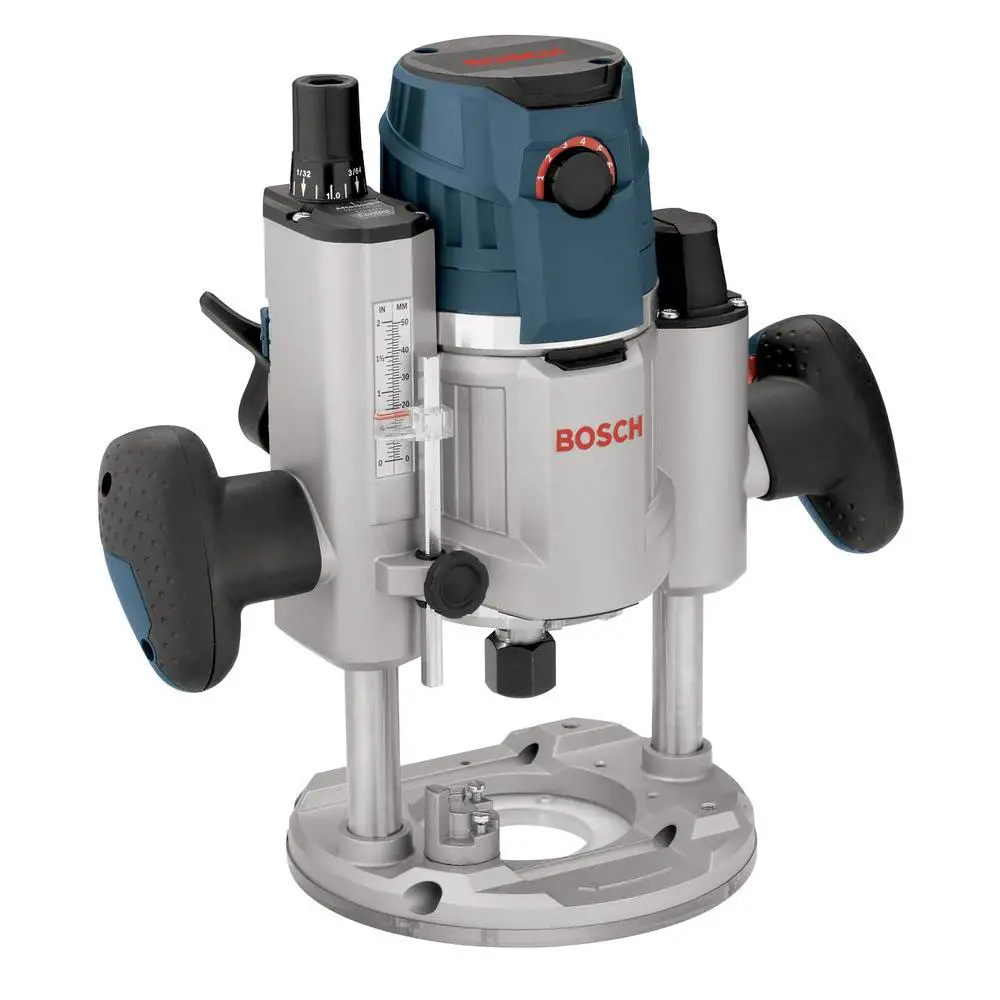
The plunge routers are the most versatile routers which cut from above (the “Z” axis) in the same way a drill press does. The motor is clamped to the base and the base guides the motor and bit into the workpiece with a controlled movement. The plunge base controls the motor using two spring-loaded columns, which direct the routers bit’s Z-axis path, enabling it to plunge into the surface vertically.
The plunge routers allow you to make a deep groove, mortise, and dadoes or even create patterns and do template work.
Fixed Base Router
The fixed-base router is an excellent all-purpose router. It allows you to do a great job of edge shaping. Unlike the plunge routers, the fixed base router doesn’t have a plunging action. Instead, the motor and the base are locked together after the bit height has been set.
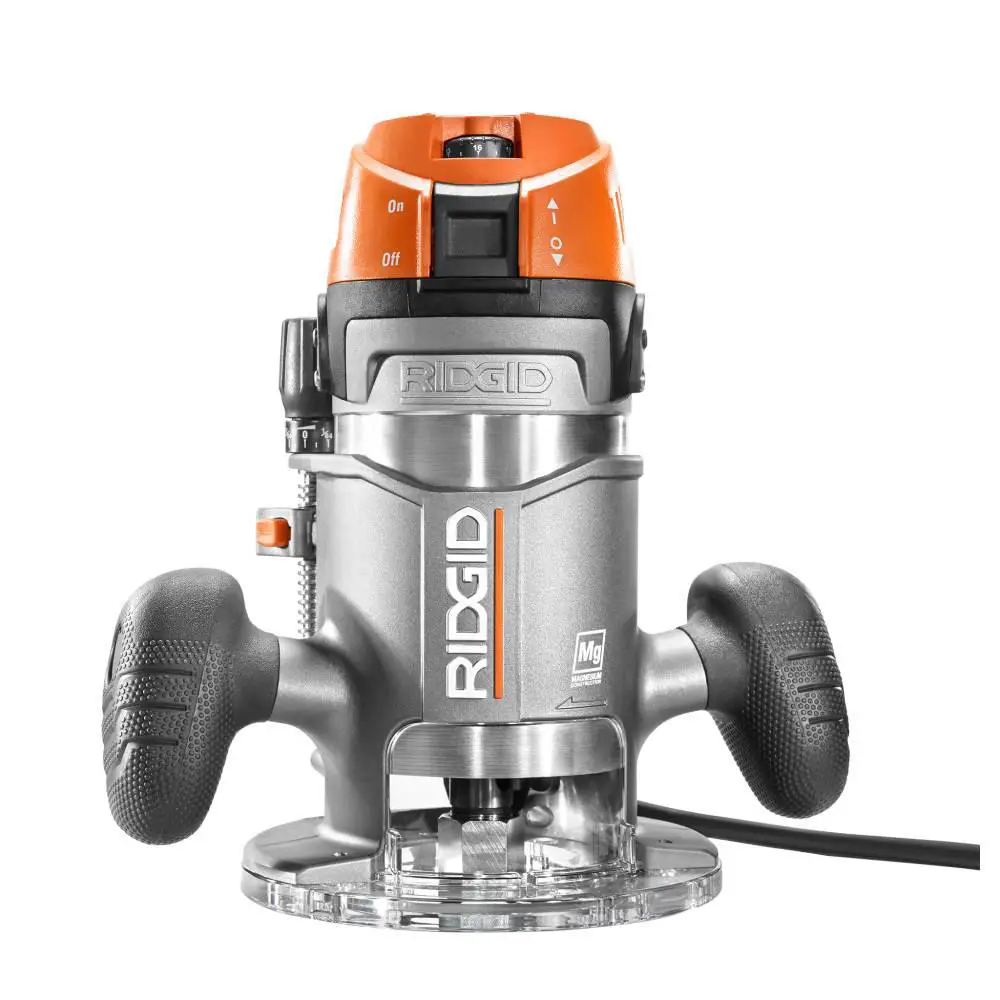
The fixed base router cannot safely cut into surfaces of materials vertically; it can only start from the edge. Once you set the router, it will cut at that fixed depth and cannot be adjusted while operating.
The good thing about the fixed base router is that the handles can sometimes be placed lower down on the body, making your hand closer to the router base. This offers more steadiness and enhanced control when managing the router.
Routers With Detachable Bases
The best option that you can use is a multi-base router, one that can use both the fixed and the plunge base. These routers have a removable base. They consist of the top half of the router with a removable base, but sometimes have extra bases for various applications.
Heavy-Duty, Medium-Duty, and Light-Duty Routers
The duty of a router will rely on two factors, the power as well as the size of the machine. The type of router you choose will also hinge on the most common projects you are planning to undertake. This will depend on the materials you will use, and the time you will be working on those materials. Additionally, you will need to consider the length of every work session to pick a router.
- Heavy-Duty Routers – These are the most powerful and largest hand routers. Their large ½” collet size and variable speed control allow them to hold 1/2″ shank router cutters with large diameter cutters. They are classified as specialized usage tools and are suitable for regular use over a long period.
- Medium-Duty Routers – This category of routers falls between the heavy-duty routers and the light-duty routers. These are the workhorse of the router world. They are easier to control than the Big guys and can perform more accurate work. However, there are some limitations; you will not be able to undertake projects with a massive requirement. Look for routers with variable speed control as medium-duty routers also come with a ½” collet as well as an interchangeable ¼” collet for smaller bits.
- Light-Duty Routers – These are often used by professionals as well as the hobbyist. Light-duty routers are the smallest size routers and can be used with smaller ¼” router bits. Often referred to a Palm Routers or Trim Routers, these little beasts are capable of many light-duty tasks. From trimming laminate to free-handing a hinge mortise, these routers are often dedicated to a specific task around the shop or job-site. Because of the inexpensive price point, many contractors keep several on hand each dedicated to a specific task.
Specialty Routers
These are specialized categories of routers that can be controlled via a computer.
CNC (Computer Numerical Controlled) Routers
Until recently, the CNC routers have been found mostly in industrial units and warehouses. They were – and still are – utilized by factories that want to produce precise, repeatable parts. A computer controls the router bits’ movements; this means that the variables like feed rate and cutting depth are set to the exact unit.
CNC routers are commonly used in the production of almost anything that needs to be precise and repeated with accuracy. And at home, they are just fun. To use a CNC router, you must make sure that all the machining tools are compatible with CNC functions.
More recently, hobbyists and small business owners have been experimenting with CNC routers. When properly used, a CNC router can expand a small business’ offerings and speed up production. For the Hobbyist, a desktop CNC can bring enjoyment as the challenge of new software and skills develop. If you want to see more about what a CNC router can build, watch this YouTube video:
Must-Have Features of Good Woodworking Routers
When buying a router, you must consider the project you want to handle and the critical features. Ensuring that you choose the router with the right features will help you embrace every bit of significance and flexibility out of it.
Below are some features to look out for before you purchase a router:
Variable Speed Control
This feature lets you choose the speed with which your router runs, depending on the task and the bit size. Most mid-size and full-size routers have this feature, with some even offering electronic feedback. The feedback system controls the speed even through hi-torque cuts and ensures the RPM stays in the precise range.
This is important to extend bit life. Once the feeds and speeds have been calculated and set in the program, any deviation from the router RPM speed could cause undue stress and heat buildup on the bit.
Soft Start
Without a soft start, a router is more likely to roar off with maximum speed the moment you turn it on. With a soft start, the router will pause after you turn the power on and then softly increase the speed to the fixed speed. New woodworking routers that have an electronic feedback system have a soft start.
Spindle Lock System and Bit Change System
All routers have a system to change out bits. If your project requires you to replace bits often, you will need a tool-less bit changing system to streamline the process.
A spindle lock allows you to thrust a spring-loaded bit to engage a bolting collar to grasp the motor shaft in place; this means that the wrench you require is for the collet.
Other options use two wrenches – one to hold the shaft (in place of the locking mechanism) and one to release the collet. Which method you choose is a matter of preference but as you move to the larger routers you will find that you will need the force of 2 wrenches to sufficiently tighten the collet.
Above the Table Adjustments
Ensure that you purchase a router that will allow you to fine-tune the cutting height from above the bench with a handle, knob, or crank. The router should also be designed to change out the collet over the table to enable you to use a properly sized bit shank.
Conclusion
It doesn’t matter whether you are a casual woodworker or a professional carpenter, you will need the tools for tasks ranging from simple trimming to any of the other rougher tasks you do; there are various types of routers for you. You can immediately upgrade your current router with the features ranging from a soft start to an above the table adjustments.
A router is an extremely versatile and essential part of a woodworking project. With the different types and sizes, you can choose one that suits all your needs. You can also go for a combination router with an assortment kit, which will offer multiple features in one router.
